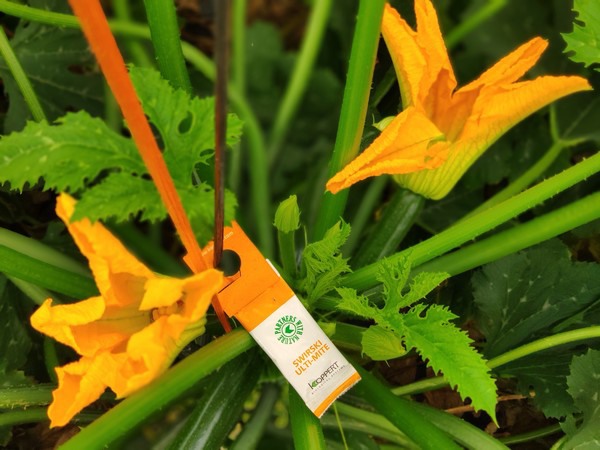Prevention is the best strategy against the New Delhi virus (ToLCNDV), which currently registers a high incidence in some production areas of southeastern Spain, especially in zucchini crops. Koppert Spain has developed its own protocol for biological control in zucchini crops based on the importance of prevention and anticipating the presence of the whitefly (Bemisia tabaci), which is the main vector that transmits this virus.

In accordance with the recommendations drawn up by the Andalusian Regional Government's Department of Agriculture, the New Delhi virus control strategy must begin with the uprooting of the previous crop. The first step is the elimination of all crop residues and weeds, which must be done before the placement of sticky traps.
In their strategy for zucchini, Koppert recommends combining Horiver® yellow trap placement with selective releases of the Amblyseius swirskii predatory mite. The traps play an important passive protection function and must be used a few days before sowing to capture whitefly specimens that may be present in the greenhouse.
Koppert recommends a high density of Horiver® yellow traps per square meter, to multiply the chances of catching whitefly. It is important to place the traps well, especially around the perimeter of the greenhouse and under the ventilation points. The optimum density for the mass trapping technique should be decided with the technical supervision of a qualified professional.
Swirski UltiMite
Two weeks after sowing, coinciding with the removal of the thermal blanket, producers should start the placement of Swirski UltiMite®, the envelope format that multiplies the production of predatory mites and is resistant to cold, rain and direct sunlight. The dose per plant will always depend on the state of the crop and the level of whitefly presence.
It is also advisable to reinforce the placement of the Swirski UltiMite® sachets with loose Swirskii in cans, especially on the bands.
Feeding with Nutari
A week later, a supplementary feeding with Nutari®, the prey mite Carpoglyphus lactis, should be started to compensate for the shortage of food available in the crop as a result of the loss of flowering due to the cold.
In addition, the Koppert technical department always advises taking extreme insulation measures in the greenhouse structure, especially in bands and doors. It is essential to verify that there are no gaps where the whitefly can enter.
For more information:
Koppert
C/ Cobre 22
Pol. Industrial Ciudad del Transporte del Poniente
04745 La Mojonera, Almería (España)
Tel.: +34 950 55 44 64
www.koppert.es
